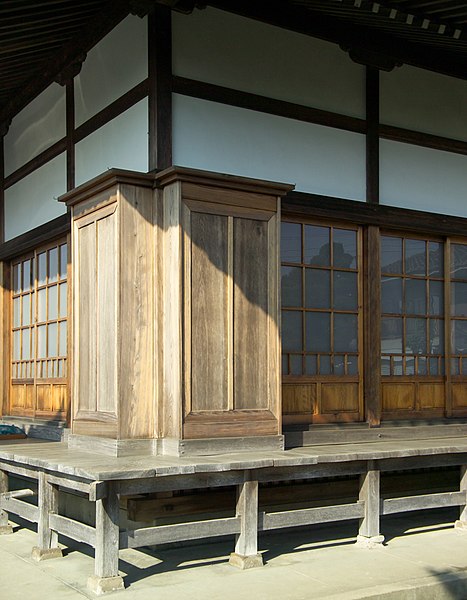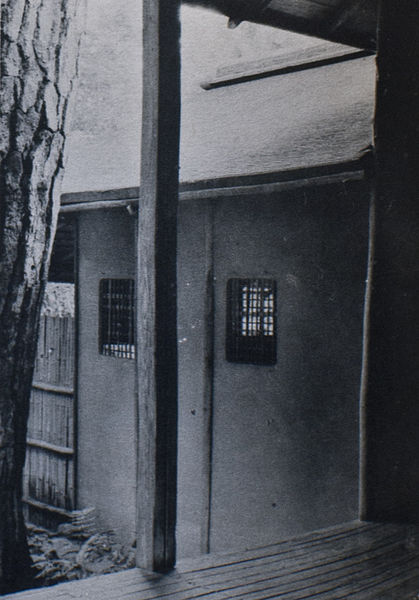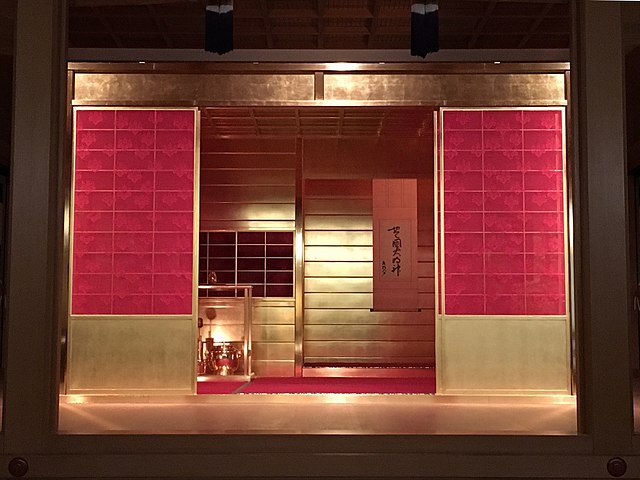Sukiya-zukuri (数寄屋造り) is one type of Japanese residential architectural style. Suki means refined, well cultivated taste and delight in elegant pursuits, and refers to enjoyment of the exquisitely performed tea ceremony.
Katsura Imperial Villa, Kyoto, an early example of sukiya style. Note that the right-hand building is older than the left-hand one, and more similar to the older shoin style.
On the right, three grooves, three panels. The maira-do are open, and the single shōji panel closed; half of the area is still filled with the maira-do. The building to the left is newer; its outer groove runs outside the pillars. The shutters are packed away in the to-bukuro in the corner, and the shōji in the inner two grooves run uninterrupted.
From the inside, light levels are lower. The reflective gold paint used extensively in Shoin style buildings helps compensate.
The corner of this temple has two to-bukuro cupboards, which the doors can slide into without having to be lifted and carried away.
Chashitsu in Japanese tradition is an architectural space designed to be used for tea ceremony (chanoyu) gatherings.
Jo-an is a chashitsu (tea house) and inscribed as a National Treasure
Interior view of a tea room
Tai-an (待庵), the only extant chashitsu designed by Sen no Rikyū, representing his concept of wabi-cha. Located in Myōki-an in Ōyamazaki, Kyoto (National Treasure)
The Golden Tea Room (MOA Museum of Art)








